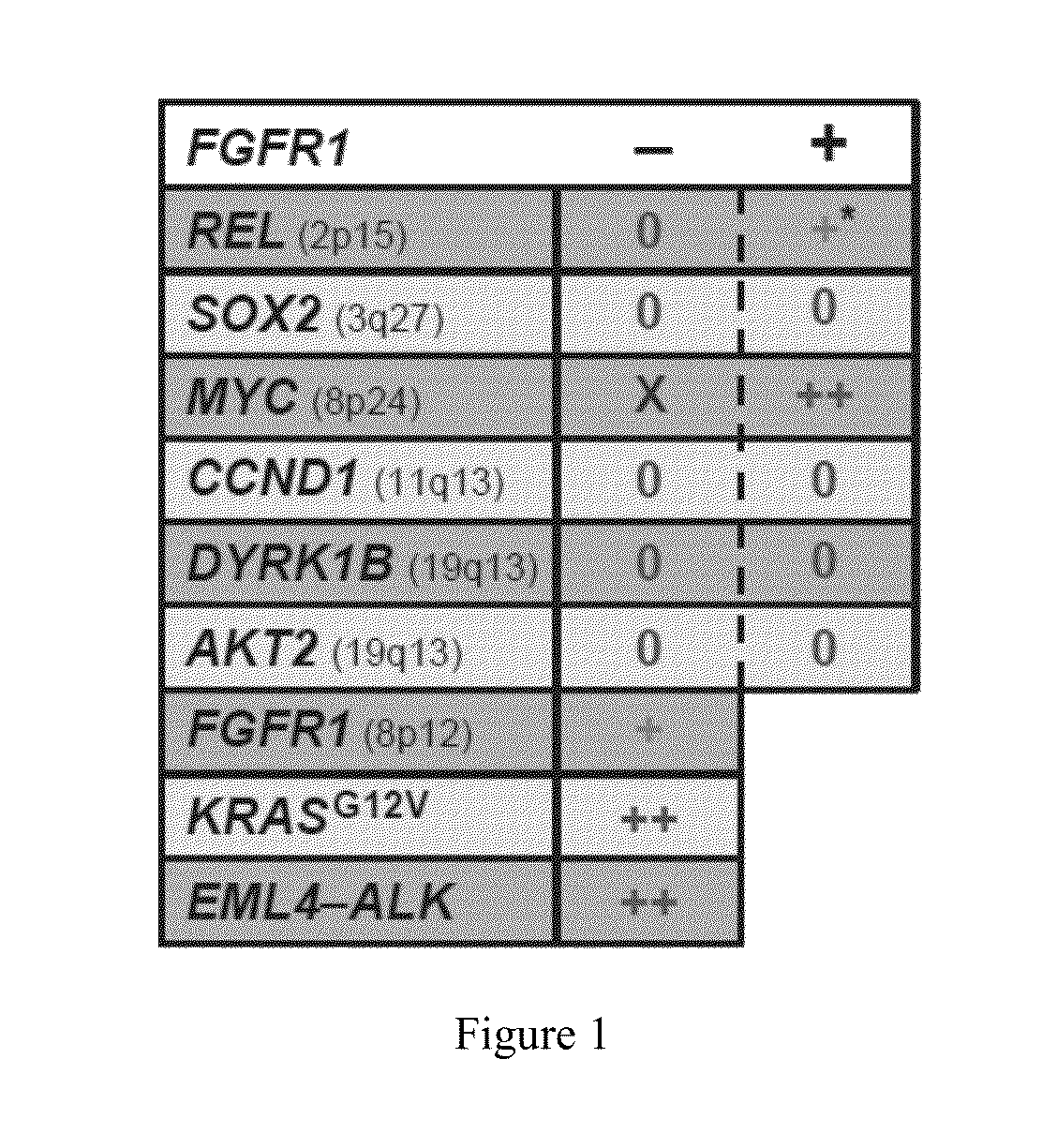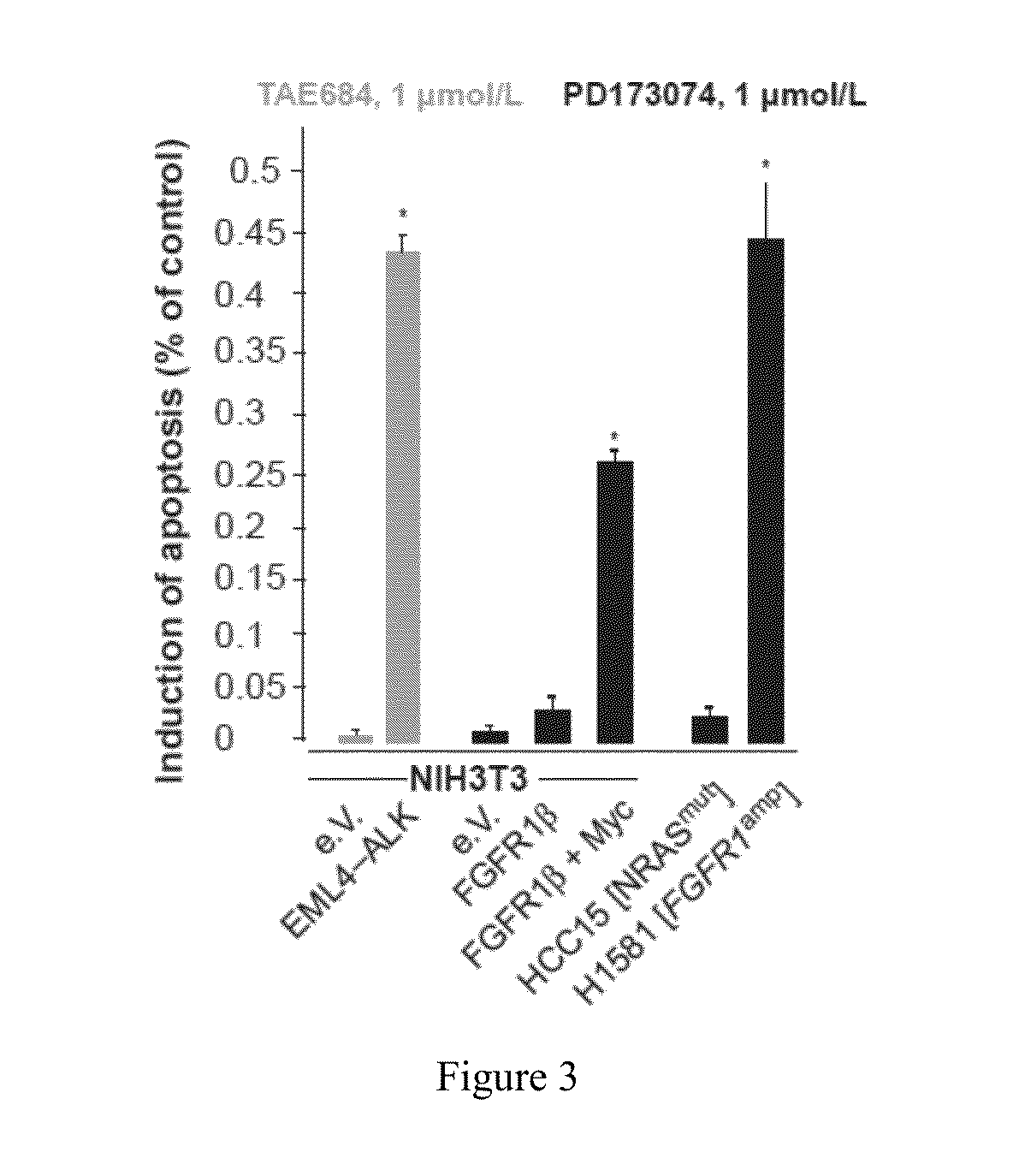Personalized treatment of cancer using FGFR inhibitors
a technology of fgfr1 and cancer, applied in the field of cancer therapy, can solve the problems that all cancer cells with fgfr1 gene amplification respond to fgfr1 inhibitors, and achieve the effects of increasing myc gene expression, increasing the likelihood of response, and increasing the expression of myc gen
- Summary
- Abstract
- Description
- Claims
- Application Information
AI Technical Summary
Benefits of technology
Problems solved by technology
Method used
Image
Examples
example
Materials and Methods
[0061]Cell Lines
[0062]Cancer cell lines, HEK293T and NIH3T3 cells were purchased from American Type Culture Collection and German Resource Centre for Biological Material (DSMZ) and cultured using either RPMI or Dulbecco's Modified Eagle Medium (DMEM) high-glucose media,
[0063]supplemented with 10% fetal calf serum (FCS). Adherent cells were routinely passaged by washing with PBS buffer and subsequent incubation in Trypsin / EDTA. Trypsin was inactivated by the addition of culture medium and cells were plated or diluted accordingly.
[0064]Suspension cell lines were passaged by suitable dilution of the cell suspension. All cells were cultured at 37° C. and 5% CO2. The identity of all cell lines included in this study was authenticated by genotyping (SNP 6.0 arrays, Affymetrix) and all cell lines are tested for infection with mycoplasma (MycoAlert, Lonza). Furthermore, the identity of the H1581 cell line was ensured by short tandem repeat profiling (DNA fingerprinting)...
PUM
 Login to View More
Login to View More Abstract
Description
Claims
Application Information
 Login to View More
Login to View More - R&D
- Intellectual Property
- Life Sciences
- Materials
- Tech Scout
- Unparalleled Data Quality
- Higher Quality Content
- 60% Fewer Hallucinations
Browse by: Latest US Patents, China's latest patents, Technical Efficacy Thesaurus, Application Domain, Technology Topic, Popular Technical Reports.
© 2025 PatSnap. All rights reserved.Legal|Privacy policy|Modern Slavery Act Transparency Statement|Sitemap|About US| Contact US: help@patsnap.com



